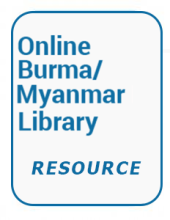Land Library Search
Through our robust search engine, you can search for any item of the over 73,000 highly curated resources in the Land Library.
If you would like to find an overview of what is possible, feel free to peruse the Search Guide.
/ library resources
Showing items 1 through 9 of 32.Financing forest restoration with the private sector – Does it work?
While Burma’s ethnic states are blessed with a wealth of natural resources and biodiversity, they
have been cursed by the unsustainable extraction and sale of those resources, which has fuelled
... Myanmar’s forest and timber sector has been central to the country’s economy and society, particularly over the last century. Since the colonial era, timber has been a major export revenue earner to Burma/Myanmar and thus subject to much political debate (Bryant 1996).
...the customary rights of communities and
Indigenous Peoples to forests, rangelands, and wetlands are often not
written down or shown on government maps, but they are a fundamental
reality. They cover more than 50 percent of the world’s land surface, yet
A video recording of a whole-day conference held on 18 June 2015. The page begins with text presentations. For the video recordings of the event, scroll down to Webcasts....."Co-Organized by RRI and IUCN, in partnership with the Embassy of France in Washington, DC...
... The National Community Forestry Instruction (1995) provides communities the opportunity for 30 year licenses to manage state forests lands for natural forest protection, mixed agro-forestry and timber production systems.
... Mangrove forests are one of the most valuable, thriving, and diverse ecosystems on the planet, but they are becoming increasingly exploited and mismanaged (Lee 1999; Giri et al. 2008).
Overview: • Definition of CF and its significance to
REDD+ objectives
• CF in Thailand and Myanmar
- Background &Characteristics
- Existing challenges
• Connecting CF and REDD+
• REDD+ progresses in Thailand and
Myanmar
• Risks and Opportunities to CF
... This study was intended to find out the benefits of forests, especially for non-wood forest products (NWFPs), to forestdependent local people and the relation to their socio-economic status. Sampling (169 respondents) was chosen to be an equal distribution of household’s economic status.


